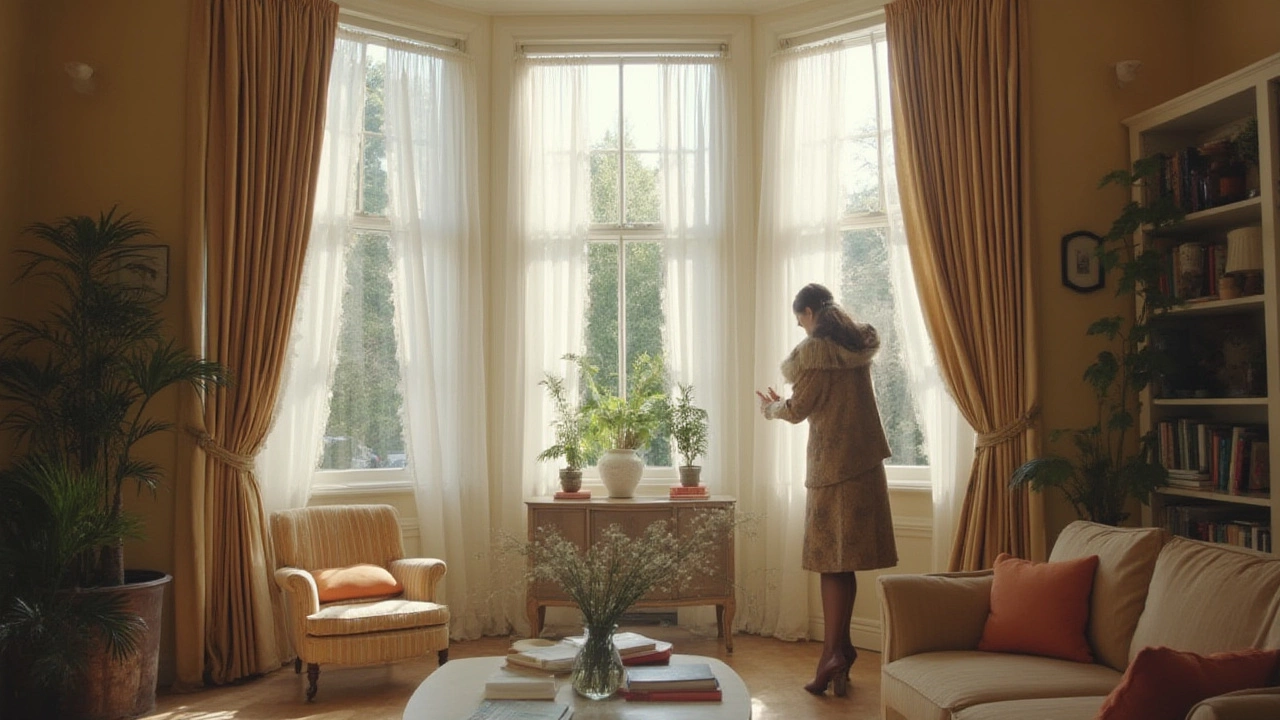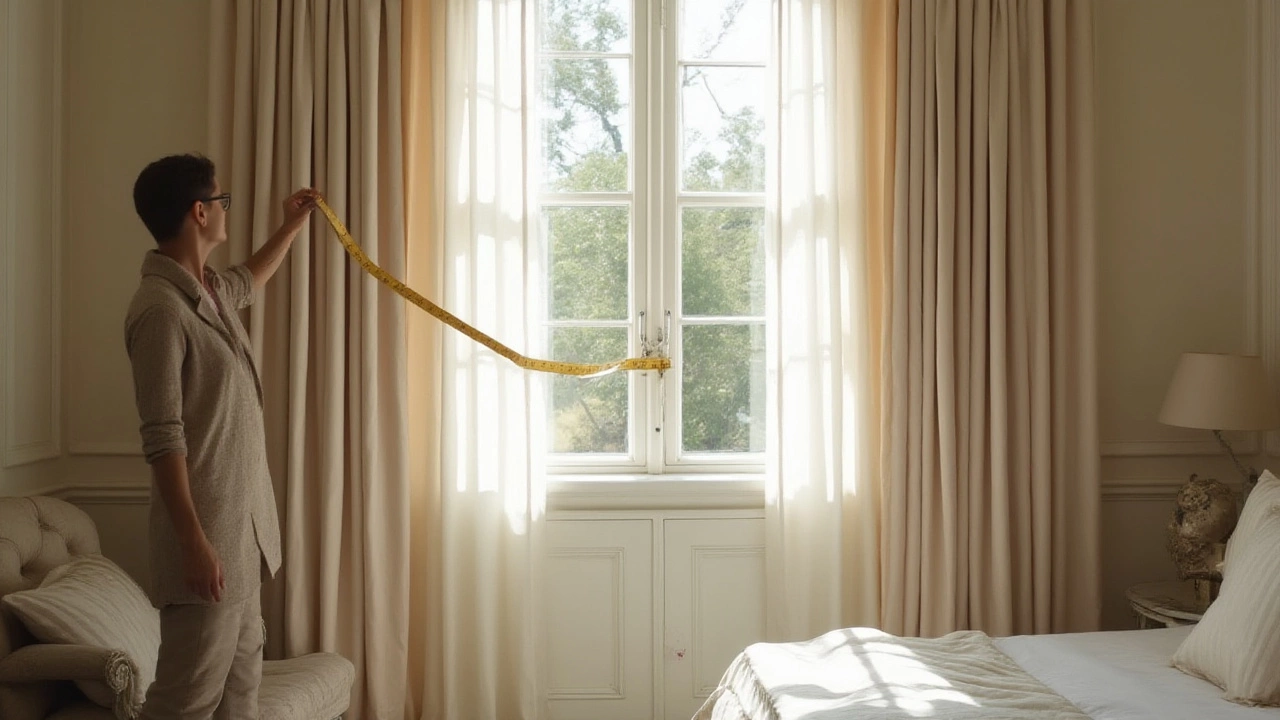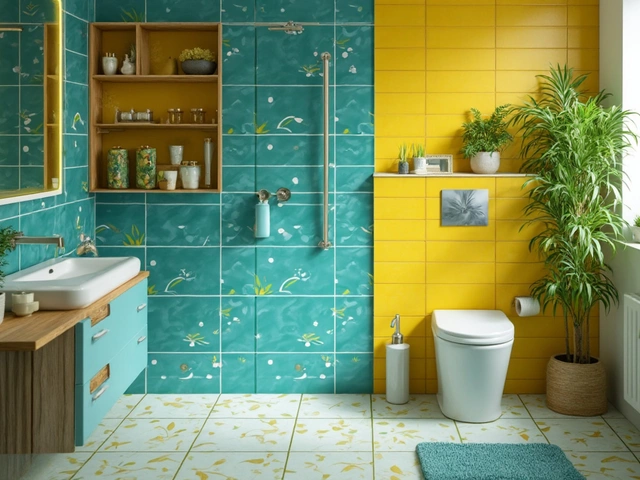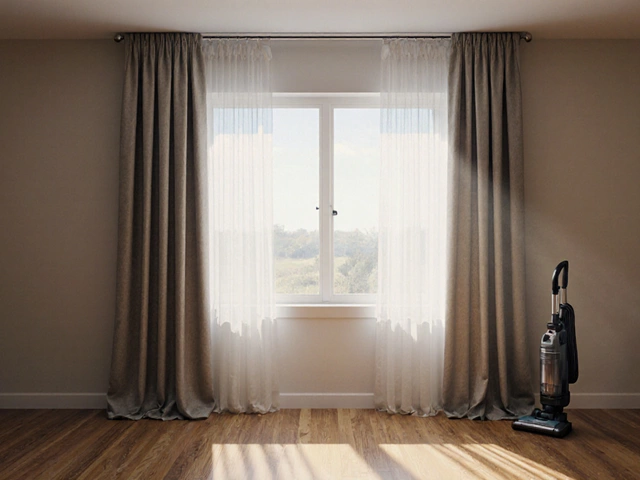How Close Should Curtains Hang to the Floor? Expert Curtain Placement Tips

You ever walk into a space and something just feels off? The furniture’s great, the colors pop, but the windows... yikes. Suddenly those curtains look like they shrank in the wash or are puddling in a woolly heap. Getting curtain length right is way more than nitpicky details. In fact, interior designers swear the height your curtains hang above the floor can change the feel and function of a room in seconds. Get it wrong, and your polished living room drops in style points fast. Get it right and everything instantly levels up. But how do you know if there should be a sliver of daylight under your drapes, a quick dusting, or a full-on fabric pool? Let’s break it down—no frills, just real talk about real rooms.
Curtain Lengths Decoded: What Each Style Says About Your Space
If you ever thought, “A few inches can’t matter that much,” you’ll be shocked. Shoppers online leave reviews in all caps over a half-inch. The classic question: Should curtains just graze the floor, hang over it a little, or brush against it? The choices aren't just about taste—they really do shape the mood and the purpose of your whole room.
Here’s a quick cheat sheet stylists swear by:
- Floating (about ½-inch off the floor): The curtain just barely misses the ground. It’s tidy and practical. Nothing traps dust, and your vacuum cleaner never tangles with the hem. Great for family rooms, kids' rooms, or anywhere you want it neat.
- Touching (just grazing the floor): It looks tailored, but not fussy—like a pressed shirt that fits just right. Think hotel chic with a warm, “yes, I live here” twist. This works nearly everywhere. If you want a low-maintenance ‘finished’ vibe, this is it.
- Breaking (curtain bends slightly against the floor): Designers call this the ‘break’. It’s a little stylish crumple at the bottom, usually around 1-2 inches of extra length. It looks intentional and feels cozy but sophisticated—especially with heavier fabrics in bedrooms or formal spaces.
- Puddling (fabric pools onto the floor): You get a dramatic, almost romantic effect, but it needs commitment. It works for stately rooms, old-school architecture, or when you want drama. Pintrest brides love it for rental apartments, but be realistic—kids, pets, and vacuums do not.
Professional decorators usually default to either the floating or just-touching approach. The big reason? It’s the easiest to maintain and it lines up visually in a way our eyes find soothing. When curtain hems look uneven or ride up awkwardly, it can shrink the sense of space or give a sloppy finish. And stats back this up: a 2024 survey by Houzz found 68% of designers said curtains “just above or touching” the floor were clients’ top pick for living rooms and bedrooms, unless a dramatic look was requested.
Let’s talk measurement. Any home store will sell “standard” curtain lengths: typically 84, 96, or 108 inches. But no home is actually standard! Bring out that tape measure, because measuring from the curtain rod (not the top of the window) down to where you want the curtain to end makes all the difference. Trust me, those panels you bought on impulse will either hover in mid-air or trail across your floor if you skip this step.
Here’s the honest secret: nothing beats custom hemming. Even budget panels from mass-market stores can look totally bespoke if you hem them to just the right spot above the floor. Iron-on hem tape is a total life-saver if you dread a needle and thread.

Factors That Change How Low Your Curtains Hang
It’s not just about fashion. The “right” length also depends on where and how you’re using the curtains. Is it a busy hallway? A place for quiet naps? A rental with drafty windows? Each space comes with its curveballs, and what looks good in your living room might not work for your kitchen or your toddler’s bedroom.
- High-Traffic Areas: If people, pets, or robot vacuums are whizzing by, a “floating” approach (curtains sitting just off the ground) lets things move freely under the sill without snagging. Look close at hotel lobbies or showrooms—you’ll almost always see a half-inch hover to keep things crisp and tidy.
- Bedrooms & Private Spaces: People love a “break” in the hem for bedrooms because it softens the room and adds that plush, cocooned vibe. If you love blackout curtains or thick velvet drapes, a slight puddle won’t just look lush; it’ll block more light and draft, too.
- Kitchens, Bathrooms, Kids’ Playrooms: You probably don’t want fabric anywhere near food spills, splashing water, or sticky fingers. Cafe curtains, or shorter panels, often end above the sill altogether in these rooms, but if you go full length, keep them floating off the floor for pure convenience.
- Radiators or Vents: Never forget those sneaky vent covers! Curtains too far down will block heat in winter and cool air in summer. Make sure your fabric ends above these spots, or you’ll end up with floppy, damp hems and weird airflow issues.
And let’s be honest—life isn’t always magazine-ready. Maybe you have a slightly crooked floor or an uneven window ledge. Even new builds can have out-of-square frames. These quirkier details mean you might need to fudge things a bit, hemming one side higher or letting the fabric slope gradually. It’s how pro stylists keep everything looking balanced, even when the house is working against them.
Here’s a stat for the skeptics: In a study by the Window Covering Manufacturers Association (WCMA) in 2023, 55% of homeowners reported they’d shortened store-bought curtains at home to get that perfect look. Bottom line: panel lengths are a starting point, not a rulebook.
| Room Type | Ideal Curtain Length | Best Placement |
|---|---|---|
| Living Room | Just touching or floating (½” above floor) | Floor-to-ceiling for drama or just over floor for neatness |
| Bedroom | Breaking (1-2” extra), or touching | Add a break for softness |
| Dining Room | Touching or light puddle (up to 6”) | Puddle for formality, touch for crisp look |
| Kitchen/Bathroom | Above the sill or floating | Functional, easy-clean panels |
| Nooks/Small Windows | Floating or even above sill | Keep it simple and user-friendly |

Troubleshooting: Fixing Awkward Curtain Gaps and Puddles
Sometimes you hang your curtains, step back, and instantly regret every choice you made. Maybe you measured wrong. Maybe the rod is crooked. No shame—most of the time, even big-name decorators mess up the first install. Here’s how to trouble-shoot your way to curtain bliss, whether you’re dealing with weird gaps, accidental puddling, or just a feeling that something’s off.
- Hems That Hover or Hang Crooked: If your curtains are floating in the breeze like cropped jeans, all isn’t lost. Clip-on rings or curtain hooks can lower the curtain by an inch or more, though this only works if your header style allows. Less sewing, more stretching!
- Panels That Pool When They Shouldn’t: Grab fusible hem tape and a hot iron, then fold up the extra fabric inside the curtain. It’s nearly invisible. You skip the hassle of taking down the rod, and your curtain is at the perfect height in ten minutes flat.
- Gaps That Show Too Much Light: If you’re looking for blackout, ensure your drapes not only hit the floor, but extend wider and higher than the window trim. This is a pro-level tip that tricks the eye and improves insulation, especially in older homes.
- Unlevel Floors or Windows: Don’t panic if your home seems to slope. Hem each panel so the bottom visually lines up—don’t rely on measurements from one panel to the other. No one will ever notice a slight change if both curtains hover in sync with the floor.
Want a design tip that makes any room look custom? Hang the curtain rod higher than the window frame—about halfway between the trim and the ceiling. Then make sure your curtain length matches. Your room will look taller, the windows bigger, and the effect feels totally luxe, even on a budget.
And if you rent? Tension rods or removable adhesive brackets won’t damage walls, and you can still dress your windows like you own the building. Just check your lease before going for anything heavy-duty. Landlords get funny about drill holes, but most have zero complaints about iron-on hems or temporary mounting hardware.
To wrap up with a bit of data: According to a 2024 study by HomeAdvisor, professionally dressed windows can boost resale value by up to 6%, especially if buyers don’t have to fuss over curtain lengths. Turns out those few inches at the hem matter a whole lot more than you might think.
So when you’re ready to level up your space, grab a tape measure, peek at your baseboards, factor in how you actually live, and don’t settle for kit-sized panels unless they’re tailored to you. A half inch really can make your room feel like home—or a design fail you cringe at every time you pass by. No more living with curtains that don’t fit. This is curtain length—done right.





